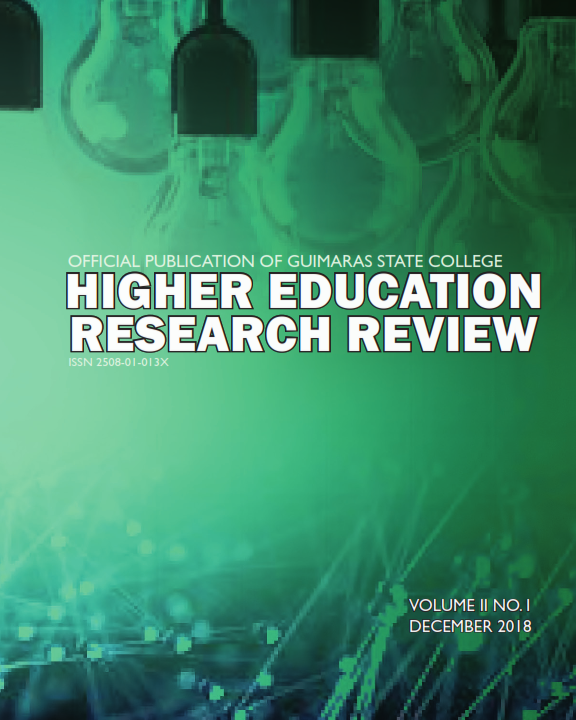History, Geographical Distribution and Surviving Indigenous Practices of the Aetas in Guimaras Island
Keywords:
Indigenous practices, Aeta Communities, geographical location, history, GuimarasAbstract
This study was conducted to determine the history, geographical distribution, and surviving indigenous practices of the Aetas in Guimaras Island using mixed method in analyzing the results. A total of seven (7) communities was identified throughout Guimaras province. Majority of the places where the Aetas reside were owned by private individuals. Only a few were donated to the Aetas.
Presently, they believe in God and others were even baptized in Roman Catholic or Protestant religions. As to their way of courtship, they practice “pamalaye” wherein the man brings food to the house of the woman he wanted to marry and talk about his intention to marry the girl. If there is a consensus between the two parties, the wedding follows. However, there were some wherein parents are still practicing arranged marriages.
During olden times, Aetas practiced the traditional way of wedding wherein the ceremony is headed by the elders of the tribe or their parents. The Aetas of today hold their wedding in churches. Usually, they join a mass wedding. Aetas bury their dead in cemeteries. They also have access to health centers and hospitals for medical purposes. However, most of them are still practicing healing of illnesses/diseases by an albularyo (Quack Doctor) using herbal plants.
The socio-demographic condition of the Aeta families showed that the household members numbered to 1–5 members and their houses have amenities and facilities comparable to common families in the non-Aeta communities. There is a need that indigenous practices of these Aetas be preserved and given proper attention by the government authorities.


